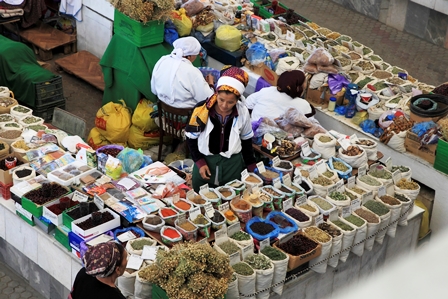
The Millennium Development Goals (MDGs) have produced the most successful anti-poverty movement in history and will serve as the jumping-off point for the new sustainable development agenda to be adopted this year, according to the final MDG report launched on 6 July by United Nations Secretary-General Ban Ki-moon.
The Millennium Development Goals Report 2015 found that the 15-year effort to achieve the eight aspirational goals set out in the Millennium Declaration in 2000 was largely successful across the globe, while acknowledging shortfalls that remain. The data and analysis presented in the report show that with targeted interventions, sound strategies, adequate resources and political will, even the poorest can make progress. UNECE is a member of the Inter-Agency and Expert Group on MDG Indicators that compiled the master set of data used in the report.
“Following profound and consistent gains, we now know that extreme poverty can be eradicated within one more generation”, said Ban Ki-moon. “The MDGs have greatly contributed to this progress and have taught us how governments, business and civil society can work together to achieve transformational breakthroughs”.
Goals and targets work
The MDG report confirms that goal-setting can lift millions of people out of poverty, empower women and girls, improve health and well-being, and provide vast new opportunities for better lives.
Only two decades ago, nearly half of the developing world lived in extreme poverty. The number of people now living in extreme poverty has declined by more than half, falling from 1.9 billion in 1990 to 836 million in 2015.
The world has also witnessed dramatic improvement in gender equality in schooling since the MDGs, and gender parity in primary school has been achieved in the majority of countries.
Worldwide, 2.1 billion have gained access to improved sanitation and the proportion of people practicing open defecation has fallen almost by half since 1990.
Official development assistance from developed countries saw an increase of 66 per cent in real terms from 2000 and 2014, reaching $135.2 billion.
Progress in the Caucasus and Central Asia
The Caucasus and Central Asia region reached the targets of halving both extreme poverty and hunger rates by 2015. The extreme poverty rate has declined from 8 per cent in 1990 to 2 per cent in 2015. The proportion of undernourished people in the total population has decreased from 14 per cent in 1990–1992 to 7 per cent in 2014–2016.
The region achieved universal primary education and has continued to advance in promoting gender equality and empowering women. Parity in both primary and secondary education between boys and girls has been achieved, and women in the region are attaining more power in politics.
Other successes include reducing the region’s under-five mortality rate by 55 per cent between 1990 and 2015, achieving almost universal skilled attendance at birth and reaching the target of halving the proportion of the population without basic sanitation.
Inequalities persist
The report highlights that significant gains have been made for many of the MDG targets worldwide, but progress has been uneven across regions and countries, leaving significant gaps. Conflicts remain the biggest threat to human development, with fragile and conflict-affected countries typically experiencing the highest poverty rates. It also stresses that climate change and environmental degradation undermine progress achieved.
“The emerging post-2015 development agenda, including the set of Sustainable Development Goals, strives to build on our successes and put all countries, together, firmly on track towards a more prosperous, sustainable and equitable world”, concluded Ban Ki-moon.

